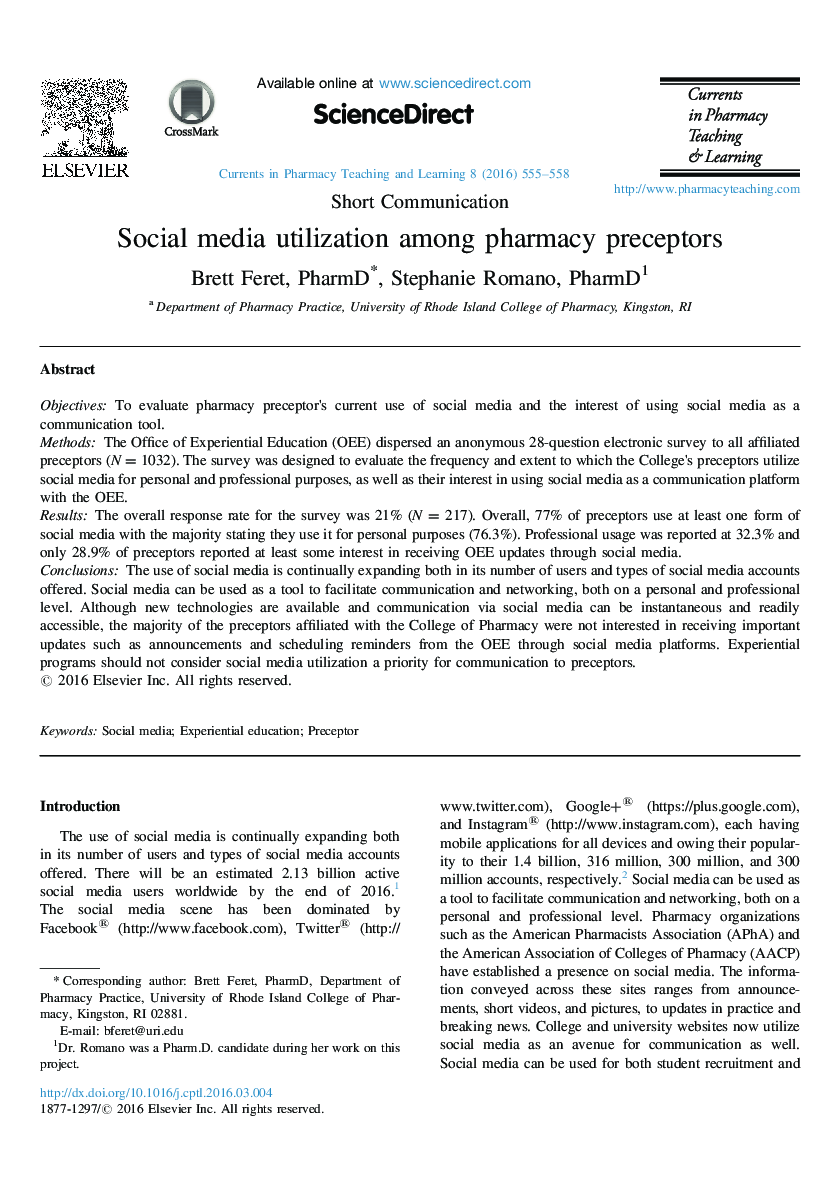| کد مقاله | کد نشریه | سال انتشار | مقاله انگلیسی | نسخه تمام متن |
|---|---|---|---|---|
| 352952 | 862795 | 2016 | 4 صفحه PDF | دانلود رایگان |
ObjectivesTo evaluate pharmacy preceptor׳s current use of social media and the interest of using social media as a communication tool.MethodsThe Office of Experiential Education (OEE) dispersed an anonymous 28-question electronic survey to all affiliated preceptors (N = 1032). The survey was designed to evaluate the frequency and extent to which the College׳s preceptors utilize social media for personal and professional purposes, as well as their interest in using social media as a communication platform with the OEE.ResultsThe overall response rate for the survey was 21% (N = 217). Overall, 77% of preceptors use at least one form of social media with the majority stating they use it for personal purposes (76.3%). Professional usage was reported at 32.3% and only 28.9% of preceptors reported at least some interest in receiving OEE updates through social media.ConclusionsThe use of social media is continually expanding both in its number of users and types of social media accounts offered. Social media can be used as a tool to facilitate communication and networking, both on a personal and professional level. Although new technologies are available and communication via social media can be instantaneous and readily accessible, the majority of the preceptors affiliated with the College of Pharmacy were not interested in receiving important updates such as announcements and scheduling reminders from the OEE through social media platforms. Experiential programs should not consider social media utilization a priority for communication to preceptors.
Journal: Currents in Pharmacy Teaching and Learning - Volume 8, Issue 4, July–August 2016, Pages 555–558
